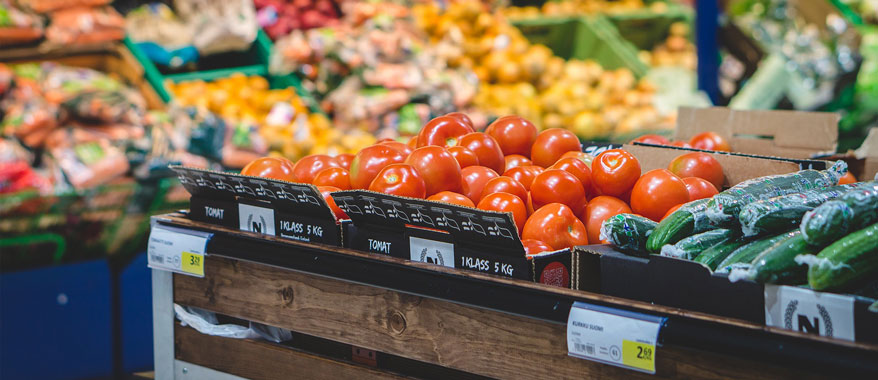
In the dynamic and competitive grocery sector, retailers need to manage a fast-moving inventory of thousands of products while responding quickly to new trends in customer demand. Grocery retailers can’t afford to have out of stocks, as these quickly lose you business: according to a Harvard Business Review analysis of customers in 29 countries, when an item is out of stock, nearly one third of customers will go buy the item in another store. Overstocks are as bad for grocery retailers, as quickly spoilt items have to be disposed of once they expire, with a consequent loss of revenue for the retailer.
Here are our 4 key secrets to success in grocery replenishment:
1. Get a clear view
Take tens of thousands of products with sales cycles that can range from a few hours to a few weeks. Add seasonal influences on demand and sprinkle with local events and customer preferences. What you’ve got is a lot of data that can be turned into accurate insights to support intelligent decisions.
The key is to have a replenishment system that can gather information about every product and its sales history across all your channels – and make good use of it by identifying sales patterns and forecasting demand. A surprising number of grocers don’t have such a system in place, and they’re quickly falling behind the ones that do.
2. Let technology take the strain
With such a large variety of products to manage, grocers need a quick and reliable way to take care of routine replenishment decisions. If you’re still doing your replenishment manually, you’re risking errors and gaps in information that some of your competitors have already eradicated.
Automating routine tasks is the secret to streamlined replenishment, but it’s important that the system works with you. It needs to process real-time information according to the rules you set, enable you to make manual adjustments for certain products, and make it easy for you to handle any exceptions manually.
3. Different rules for different locations
Grocery retailers need to make the right replenishment decisions about everything from fresh produce with a limited shelf-life to packets that can sit on the shelf for weeks. Demand can differ between branches in the chain, influenced by anything from local weather conditions to promotional activity. How can you use all that information effectively to make timely decisions about how much stock you need at which location?
Effective replenishment relies on rules to treat different types of product appropriately – while making sure you don’t have so many rules you clog up the system. Retailers enjoying the most success in this area are using automated systems that apply the rules they set, while taking relevant trends and influences into account. Using different models such as demand forecasting, re-order points and push distribution enables those retailers to make sure every location in the chain has the right amount of stock.
4. Make sure it’s omni-channel
Online grocery shopping is growing in popularity, and retailers that can offer streamlined delivery of everything the customer ordered will soon outstrip those who can’t. But many are still surprised to learn that integrating replenishment with all their retail channels is essential to delivering a great omni-channel experience for shoppers.
It makes perfect sense though: customer satisfaction will increase if they can immediately see unavailable items and suggested substitutions before they place their order. And retailers stand to save a lot of time and expense if returned items are instantly reflected in the inventory and replenishment system – whether they’re returned to the store or to the delivery driver. The secret is to make sure the system managing replenishment is fully integrated with e-commerce, brick-and-mortar, logistics and other external partners’ systems so that everyone has a clear, real-time picture of demand and supply.
Grocery retail is a fast-paced business and replenishment is at the heart of the convenient, omni-channel experience customers expect. To learn more about the impact of replenishment processes on your business, read our latest eBook about the key mistakes made in grocery replenishment and how to avoid them.

